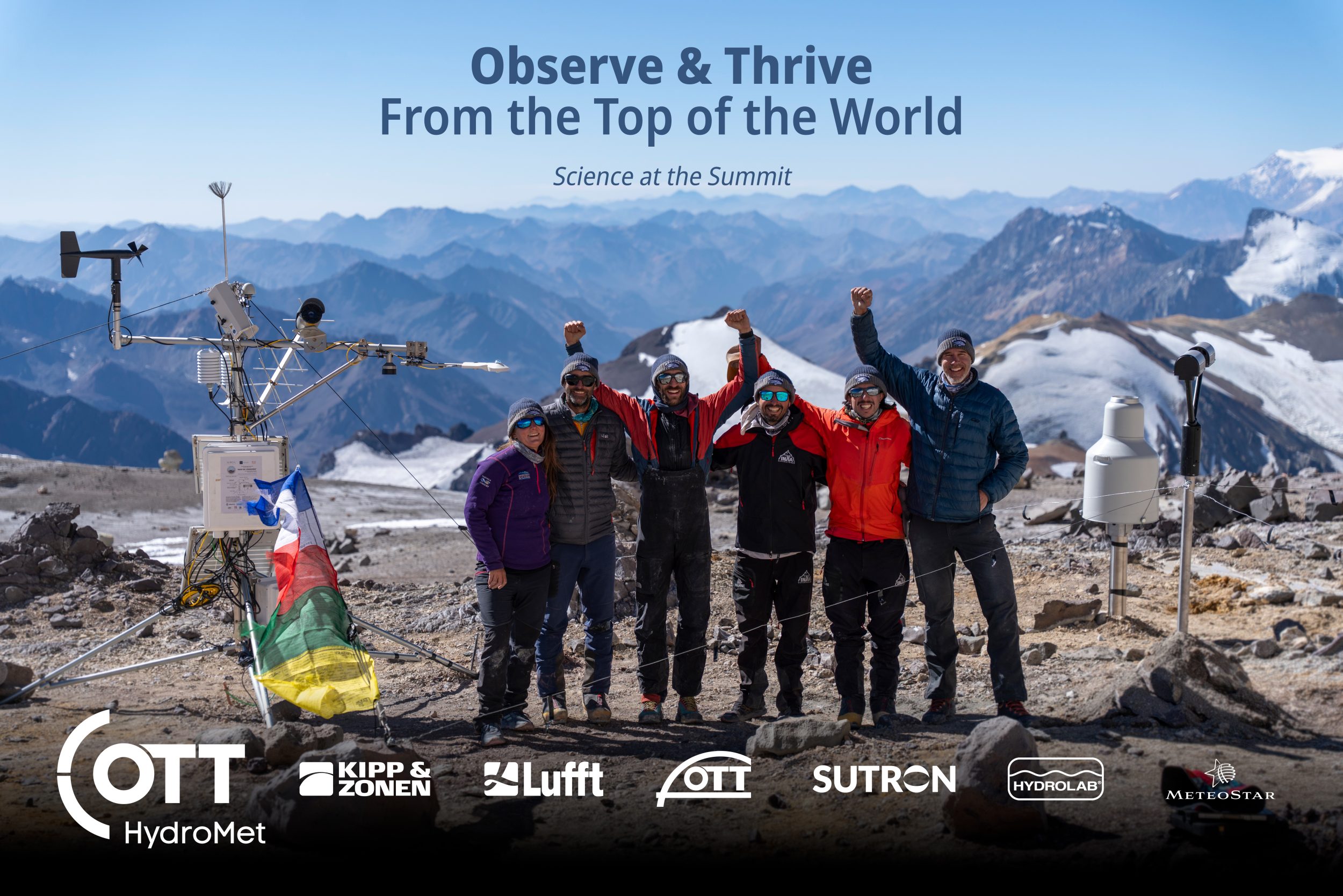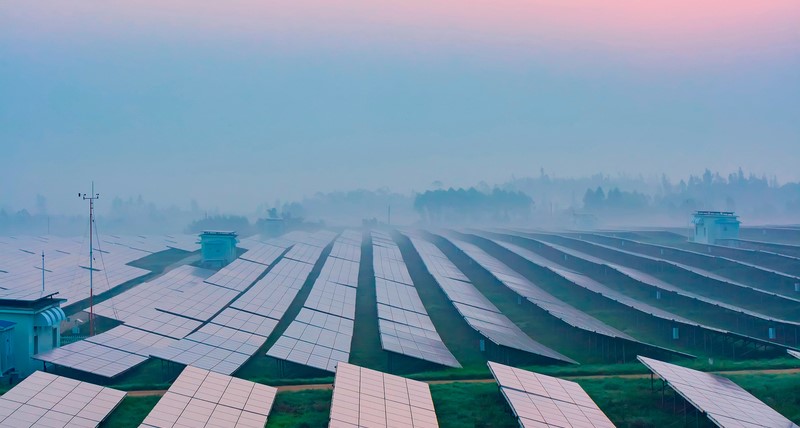In cases of rain, snow, low sun, storms fog or frozen roads the weather can lead to dangerous traffic situations. At temperatures around 0°C it’s extraordinary critical. In the winter services’ fields of application there are many different conditions: some road sections are slippery; others are wet or even dry. Therefore the officers-in-charge wonder very year between fall and winter or winter and spring: Do I have to go out for a control tour? If so, where are the most critical spots? Joerg Riemann, meteorologist at Europe’s largest private weather service MeteoGroup, supports the winter service customers. In the following, he explains how they can make precise decisions and save time and costs with the help of data from ice warning systems…

Photo: Der Schroeder, Fotolia
In cases of occurring rain, snow, low sun, storms fog or frozen roads the weather can lead to dangerous traffic situations. At temperatures around 0°C it’s extraordinary critical. In the winter services’ fields of application, they encounter many different conditions: some road sections are slippery; others are wet or even dry. And every year between fall and winter or winter and spring the heads of operations wonder: Do I have to go on tour to check the road conditions or not? And if so, where are the most critical spots exactly?
Joerg Riemann, who is meteorologist at the MeteoGroup, Europe’s largest private weather service, is in charge of the winter road maintenance customers. In the following he explains how the winter service is able to make precise decisions with the help of data from ice warning stations and how work time and unnecessary costs can be saved.
In what way does the special measuring method of ice warning systems differ from traditional radio and television weather reports?
The classic weather services provide a general weather forecast for a given region. For example, at one place the air temperature amounts 2 degrees and at the other 4. For the scheduling of winter road clearance tours, this information is far too insufficient. Whether slipperiness on roads occurs depends largely on the temperature of the road surface. Usual environmental weather stations measure at a height of 2 meters according to international standards. Therefore, they can’t deliver information about the road temperatures. In constrat to this, ice warning systems provide measurement data from exactly where frozen streets arise: immediately at the road surface. They detect the air temperature in close proximity to the ground at heights between 5 cm and 2 m. In extreme cases there can be differences of up to 10 degrees between these measurement spots.
Where to place ice detection sensors?
The road surface temperature is influenced by numerous factors such as micro climates. If the road is surrounded by buildings tightly, it normally cools down less than other road sections. Also trees at the roadside reduce the temperature drop at night. On the opposite in hollows or ground depressions, which are sheltered from the wind, it can come to extraordinary strong cooling at the pavement. Hillside and forest areas where the sun stands low are always exposed to shadow and are hindered to warm up during daytime. A further factor is the type of crust: cobblestone pavement cools down faster than other types. On bridges, which aren’t warmed by deep ground layers, hoarfrost occurs faster as on normal surfaces.
In order to get a reliable road section forecast and to fight against slipperiness, it is necessary to know the section’s texture exactly. For the right positioning of measurement technology sections which are especially prone to be slippery can be identified in the field by means of thermal and sky view mapping. Ice detection facilities monitor the condition of the endangered spots around the clock and the advantage for the winter road services is obvious: In case the RWIS (road weather information system) doesn’t send an alert at its sensitive position, the all-clear signal is valid for every other road section in the application area as well. This means, for such cases, the winter service doesn’t need to go on tour.
Which data are delivered by RWIS?
RWIS are programmed to alert within a two-degree range (+/- one degree). For this, the temperature is measured in two meters height, 5 cm above the ground as well as in 30 cm depth. Moreover the road conditions (moist, dry, and icy), the air temperatures and the wind speeds are recognized. We from MeteoGroup provide our customers with actual measurement data and geo-location forecasts on a special online portal at www.Glaette24.de (meaning: “slipperiness”) as well as through an App named RoadMaster. By means of remote monitoring, the winter services are saved from unnecessary journeys. Furthermore, they are able to access the gapless data archive which can also serve as proof in cases of damages.
What’s the advantage of such local measurements for the winter and road maintenance?
Institutions which are in charge of the road and winter maintenance carry a high responsibility for the safety and traffic load on roads. Simultaneously, they have to work in the most efficient way. The conditions of the respective application area play an important role for the creation of weather forecasts. The integration of the RWIS data enables us to deliver highly precise road section forecasts, with which winter services can plan their route optimally by prioritizing endangered segments and by de-icing the streets purposeful.
We deliver reports covering 36 hours, 8 hours, 15 days as well as whole months regarding the road conditions and the surface temperature. In addition we offer ice warnings at short notice containing information about intensity and the duration of frozen road events. In the case that forecasts are changed or immediate danger occurs, we meteorologists are in standby to call our customers and warn them.
When does the winter service season start for meteorologists and road services typically?
For us meteorologists the winter season nowadays last longer than earlier. Prevention became a major issue to our customers. Besides some exceptions, the season starts at first November and lasts until April the 15th. For airports and at big city cleansing departments, the season starts at first of October already and endures until end of April.
Our weather hotline which is available all around the clock is on the one hand used by winter services in order to prioritize the road clearance of special regions. On the other hand in order to get an estimation of an experienced meteorologist for their field in charge. Often they wonder, when and how much snowfall is expected, at which time the snow and ice starts to melt and when the snowfalls will stop.
When are the first snowfalls expected? Did more snow fall in former times?
This always depends on the region. In statistical terms, in Berlin the winter starts on November 16. In comparison to Thuringia, Hesse and the Ruhr area, where this already can happen in October, November would be too late already.
The feeling that in earlier days more snow fell, originates from the fact, that extreme winters are remembered more likely than normal ones. The last extreme winter was the one of the year 2010, when more than 40 cm snow was lying in Berlin.
Personal details at the end: Do you consider yourself as summer of winter type?
Clearly I’m a summer type! I don’t like winters in Germany. For children, the white splendor is great of course. If I could choose a region in winter, then I’d prefer Scandinavia, Russia or Canadia. They come with clear skies, sunny days and lots of snow. Unfortunately, these kinds of winter are a rarity in Central Europe.
Info box:
In cooperation with MICKS, MeteoGroup offers rental ice detection stations. The weather service also counsels customers about the choice and the placement of the measurement technology and delivers specific forecasts for the installations so that customers can proceed target-oriented and – if possible – preventively.
 |
About the author: My name is Jörg Riemann and I’m a meteorologist at MeteoGroup – Europe’s largest private weather service. There I’m responsible for the support of the winter service. With the help of our weather data and forecasts, the removal of snow and ice works much more efficient. |


